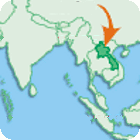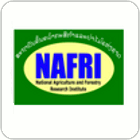Plant breeding programs in Lao PDR
 Laos, officially the Lao People's Democratic Republic (Lao PDR), is a landlocked country in Southeast Asia. After a period as a French protectorate, it gained independence in 1949. A long civil war ended officially when the Communist Pathet Lao movement came to power in 1975, but the conflict between factions continued for several years.
Laos, officially the Lao People's Democratic Republic (Lao PDR), is a landlocked country in Southeast Asia. After a period as a French protectorate, it gained independence in 1949. A long civil war ended officially when the Communist Pathet Lao movement came to power in 1975, but the conflict between factions continued for several years.
Agriculture has played an important role in helping rehabilitate and stabilize the national economy, through production increase. Today agriculture is still one of the predominant economic sectors of Laos, accounting for 52% of the GDP. More than 85% of total population is engaged in agriculture. Rice is the most important staple food of Laos’ people.
Five public organizations are involved in plant breeding and associated biotechnology in Laos and are all dependent of the same institute -- NAFRI. There is no private sector related to plant breeding in Laos.
Rice has by far the largest resources allocation. Laotian breeders are improving rice grain quality, mainly cooking and eating quality (softness and aroma). In addition there are some investments made in crops such as maize, roots and tubers, grain legumes and soybean. The number of improved varieties is still very limited and they are not available for all important crops in Lao PDR.
A major limitation in the utilization of plant genetic resources for crop improvement programmes is the lack of well educated and trained staff. Currently there are only a very few plant breeders and agronomists working on a few crops and relying on external projects for financial assistance to evaluate the genetic resources.
Research and education institutes with activities in plant breeding
 |
National Agriculture and Forestry Research Institute (NAFRI)
|
______________________________________
Information by Bounhom Thepphavong Sipaseuth (2007) - Information based on the Lao PDR's full report from the PBBC survey.
Last revised 01-03-2010, GIPB

